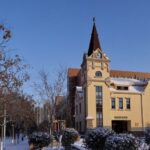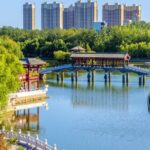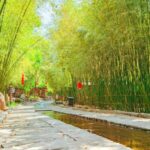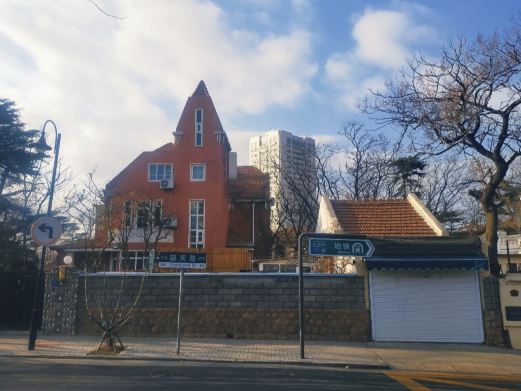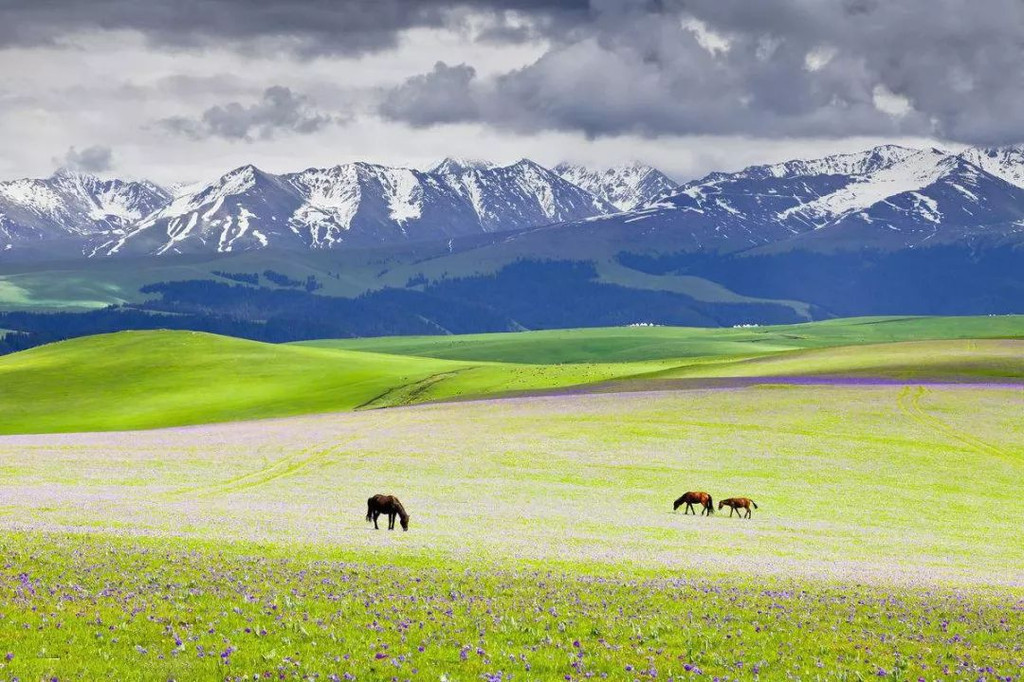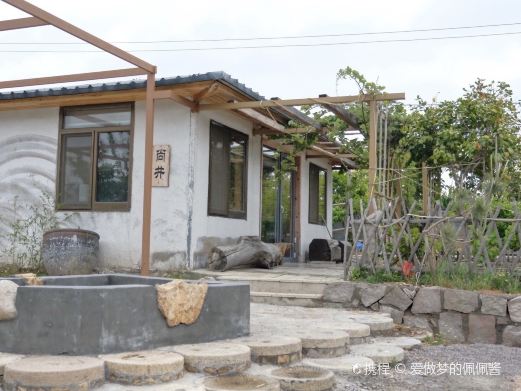The Water Curtain Cave is located in Huaguoshan Mountain, Lianyungang City. It is famous overseas because of “Journey to the West”. Wu Cheng’en was inspired by this Water Curtain Cave. In “Journey to the West”, it provided an activity place with very strong mythological colors for the early Sun Wukong. Therefore, there are many Water Curtain Caves all over the country, but they all got their names after the popularity of “Journey to the West”.
Only here had it before the popularity of “Journey to the West”. In a stele inscription written for Sanyuan Palace by Zhang Chaorui, a native of Haizhou in the Ming Dynasty, it is recorded that the Water Curtain Cave is a must-visit place for pilgrims. The four characters “High Mountains and Flowing Waters” on the stone wall were inscribed by Wang Tong, the magistrate of Haizhou. It was in 1544, the 23rd year of Jiajing in the Ming Dynasty. At that time, “Journey to the West” had not been published yet. The Water Curtain Cave is a natural fissure cave, and there is an artificial tunnel leading to the lower platform. There are many precious inscriptions in front of the cave. Among them, “Yinxin Stone House” was written by Emperor Daoguang of the Qing Dynasty and bestowed on Tao Shu, the lesser protector of the crown prince, minister of war, and governor-general of Liangjiang. It is said that in 1832, Tao Shu was ordered to come to Haizhou to reform the salt administration. The results were remarkable, turning the deficit of the imperial treasury of the Qing court into a surplus. There was a short period of rejuvenation. Therefore, the emperor gave him the honor of personally writing the name of his study. Three years later, Tao Shu came to Haizhou again in the capacity of an imperial envoy to inspect the effectiveness of the salt administration reform. He also initiated the renovation of the Yuntaishan temple guardianship and carried out extensive construction, making the scenic area here take on a completely new look. To commemorate his achievements, the locals put the imperial inscription “Yinxin Stone House” beside the Water Curtain Cave. The two characters “Lingquan” are the handwriting of Shi Liangcai, the magistrate of Haizhou during the Jiaqing period. “Lingquan” refers to the small square well in the cave. Although the well is not large, it always has water all year round and does not dry up in severe droughts. Folk legends say that the sea eye leading to the Dragon Palace of the East China Sea refers to it. Opening hours: From March 1st to November 30th, it is open from 07:00 to 18:00; from December 1st to February 28th, it is open from 08:00 to 17:00.Water Curtain Cave
The Water Curtain Cave is located in Huaguoshan Mountain, Lianyungang City. It is famous overseas be[...]

